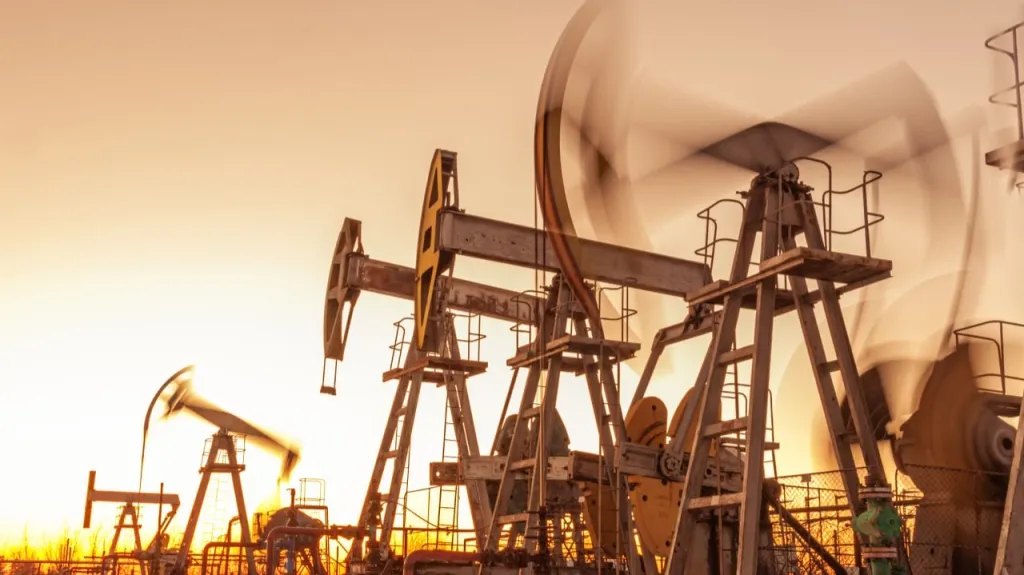Exxon and Chevron's profits fell due to lower oil prices. How did investors take it?
Both companies reported record production levels

US oil giants Exxon Mobil and Chevron reported lower net income for the third quarter due to cheaper oil, but beat Wall Street expectations on revenue and earnings per share. Both companies increased production to record levels: Chevron - after buying Hess and expanding production in Kazakhstan and the Gulf of Mexico, and Exxon Mobil - thanks to activity in Guyana and the Permian Basin.
Chevron
U.S. oil giant Chevron on Friday reported third-quarter financial results that exceeded Wall Street expectations. Chevron's earnings per share amounted to $1.85, beating analysts' forecast of $1.68 (according to LSEG data cited by CNBC). Revenue was down about 2% at $49.73 billion versus expectations of $49.01 billion.
The company also reached a record production level of 4.1 million barrels per day, 21% more than in the same period last year. The production growth was driven by the acquisition of oil and gas company Hess Corporation, as well as production in the Perm Basin, the Gulf of Mexico and Kazakhstan, the company said.
But the oil giant's net income fell 21% to $3.5 billion from $4.5 billion a year earlier. The drop in profit was due to lower oil prices and a $235 million loss related to transaction costs on the purchase of Hess. Oil prices in the U.S. have fallen about 16% since the beginning of the year amid increased production by OPEC+ countries and fears of an economic slowdown due to duties imposed by U.S. President Donald Trump, CNBC reported.
Chevron's U.S. division made a profit of $1.28 billion, 34% less than in the same period a year earlier. At the same time, production in the U.S. increased by 27% to 2 mln bpd. The international division made a profit of $2 bln - 24% lower.
The margins of Chevron's refining business helped partially offset the profit decline. In the U.S., its profits expanded more than 300% to $638 million versus $146 million a year earlier. The international refining business posted a profit of $499 million, up 11% from a year ago.
Capital expenditures increased by 7% to $4.4 bln, mainly due to investments in assets transferred from Hess. Chevron's adjusted free cash flow increased by about 50% to $7 bln year-on-year.
Chevron shares jumped 3.5% in trading on Oct. 31 and have added 8.3% since the beginning of the year.
Exxon Mobil
Exxon Mobil, the largest U.S. oil producer, also beat Wall Street expectations for earnings per share for the sixth consecutive quarter after the launch of its fourth oil project in Guyana, Bloomberg writes. The adjusted figure for the third quarter was $1.88, seven cents above the average forecast of analysts surveyed by Bloomberg. At the same time, net income fell 12% to $7.55 billion.
Exxon CEO Darren Woods noted that the company showed the highest earnings per share among similar quarters with falling oil prices. At the same time, the results were negatively affected by low margins in the petrochemical business, which is at the bottom of the cycle, CNBC writes.
The company's third-quarter profit was helped by the launch of the Yellowtail project, the largest 250,000 bpd field in Guyana's history, which brought the company's total production in the country to a record 700,000 barrels per day, Bloomberg notes.
Overall, Exxon produced 4.77 million barrels of oil per day in the quarter. The upstream division made $5.68 billion in profit, the refining business made $1.8 billion, and the chemicals business brought in $515 million.
Capital expenditures of the company since the beginning of the year reached about $21 bln. Exxon expects that by the end of 2025 they will be slightly less than the lower boundary of the forecast - $27-29 bln. In the third quarter Exxon spent $2.4 bln on business expansion, including several deals on areas in the Permian Basin in the U.S., where production reached a record 1.7 mln barrels per day. The company intends to further increase production in the U.S. and Guyana, despite oversupply in the market and a slowing economy putting pressure on prices, the Wall Street Journal notes.
After years of trying to halt the decline in production, Exxon is now actively increasing fossil fuel production. According to Bloomberg, analysts forecast oil and gas production growth of about 5% next year. The bulk of that increase is expected to come from Guyana, where Exxon in 2015 made its largest oil discovery in decades, Bloomberg notes. The company's plans include installing three more floating production platforms in the country by 2029, which would raise production capacity to nearly 1.5 million barrels a day - comparable to the current output of OPEC member Nigeria.
Exxon securities were down 018% in trading on October 31, relative to the beginning of 2025, they are in the plus 5%.
This article was AI-translated and verified by a human editor
